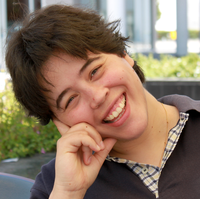Fall 2006 @ University of Rochester, Term Report: Difference between revisions
From HLT@INESC-ID
mNo edit summary |
No edit summary |
||
| (2 intermediate revisions by the same user not shown) | |||
| Line 16: | Line 16: | ||
== Abstract == | == Abstract == | ||
I will be talking about my work at [http://www.cs.rochester.edu/ University of Rochester] (UoR) during the last Fall. | |||
I made a course on [http://www.cs.rochester.edu/u/schubert/247-447/ Natural Language Processing] and I worked with James F. Allen, Mary D. Swift and the "Continuous Understanding" team. | |||
"Spontaneous speech, with its interactive nature and close ties to world and task context, is often viewed as less desirable than carefully planned utterances". However, "under certain conditions, interactive and context-specific spontaneous speech is not only an efficient and effective means of human-human communication, but is actually simpler than its carefully planned counterpart in a number of dimensions that are important to both human and automated processing". | |||
Being so, the UoR's researchers created a test bed domain to study the behaviour of the language in continuous spontaneous speech. The main goal of the test task is to construct objects, place them on a map, orient them, and paint them to match a (paper) card showing the target object. | |||
As part of the team I participated on the design of an annotation schema for the corpus and I was given the task of building a spatial reasoner to resolve spatial descriptions of objects and locations. This work is still unfinished but some preliminary results can (and will) be presented. | |||
[[category:Seminars]] | [[category:Seminars]] | ||
[[category:Seminars 2007]] | [[category:Seminars 2007]] | ||
Latest revision as of 20:31, 8 February 2007
Date
- 15:30, January 26, 2007
Speaker
Abstract
I will be talking about my work at University of Rochester (UoR) during the last Fall. I made a course on Natural Language Processing and I worked with James F. Allen, Mary D. Swift and the "Continuous Understanding" team.
"Spontaneous speech, with its interactive nature and close ties to world and task context, is often viewed as less desirable than carefully planned utterances". However, "under certain conditions, interactive and context-specific spontaneous speech is not only an efficient and effective means of human-human communication, but is actually simpler than its carefully planned counterpart in a number of dimensions that are important to both human and automated processing".
Being so, the UoR's researchers created a test bed domain to study the behaviour of the language in continuous spontaneous speech. The main goal of the test task is to construct objects, place them on a map, orient them, and paint them to match a (paper) card showing the target object.
As part of the team I participated on the design of an annotation schema for the corpus and I was given the task of building a spatial reasoner to resolve spatial descriptions of objects and locations. This work is still unfinished but some preliminary results can (and will) be presented.
